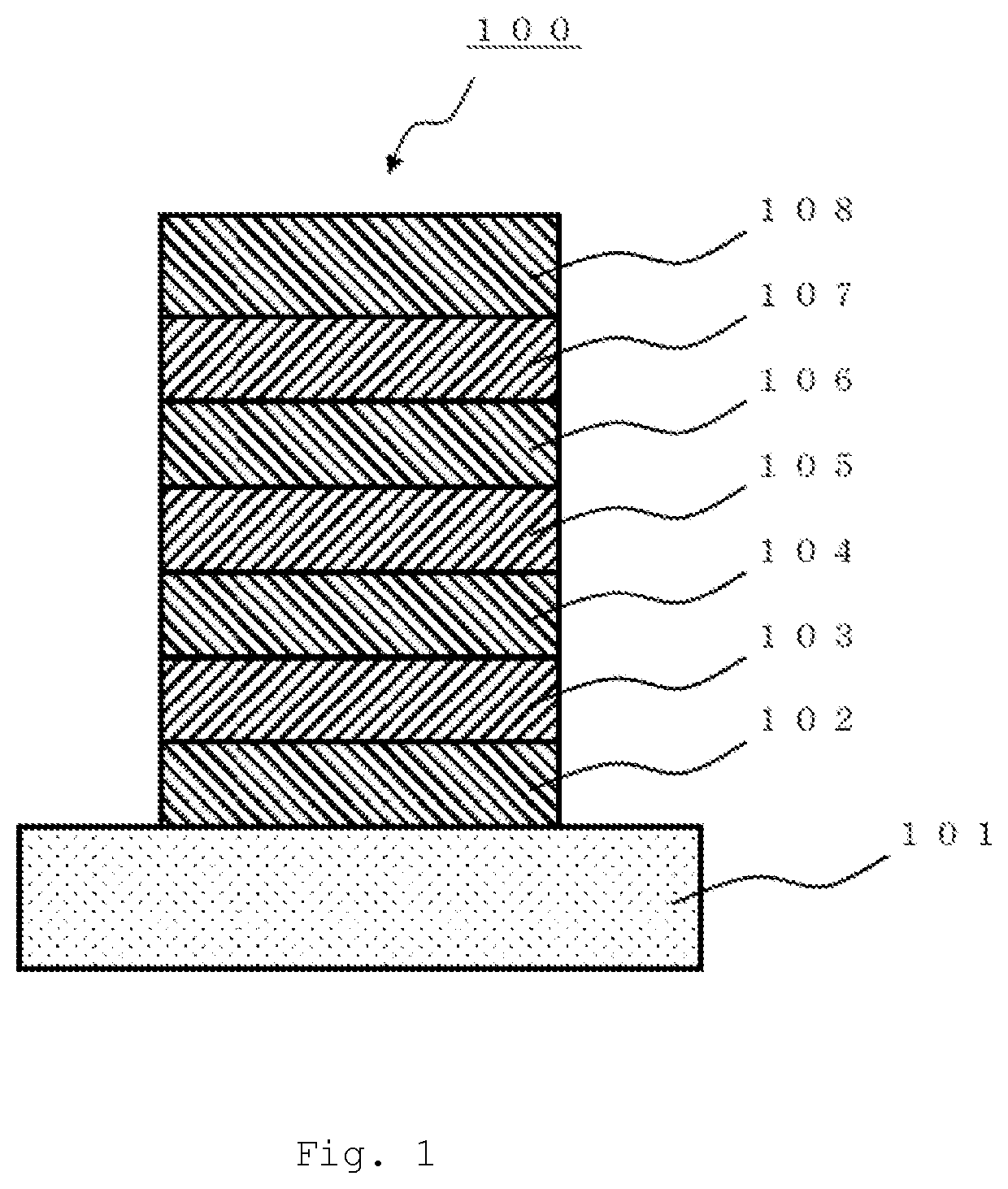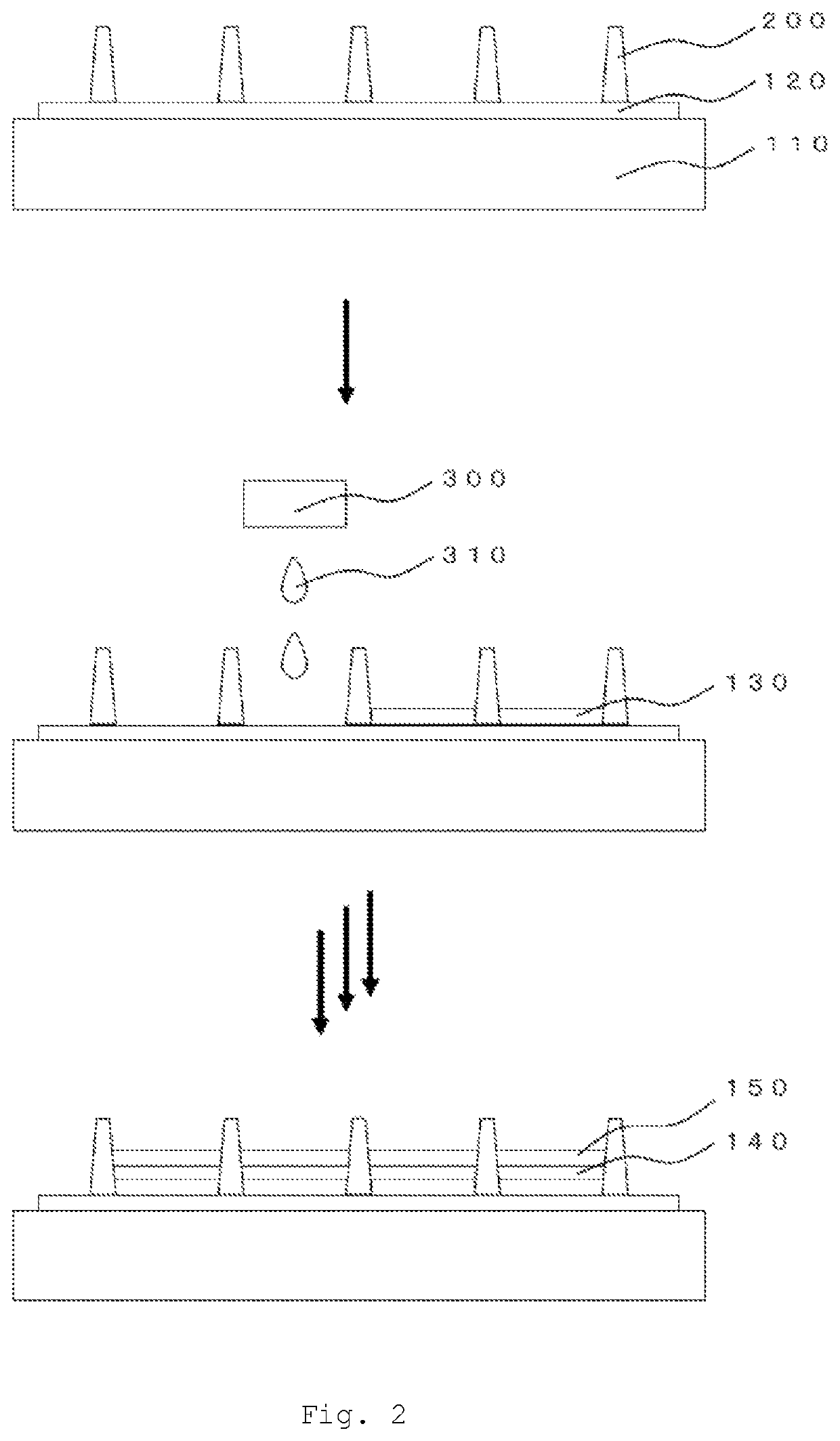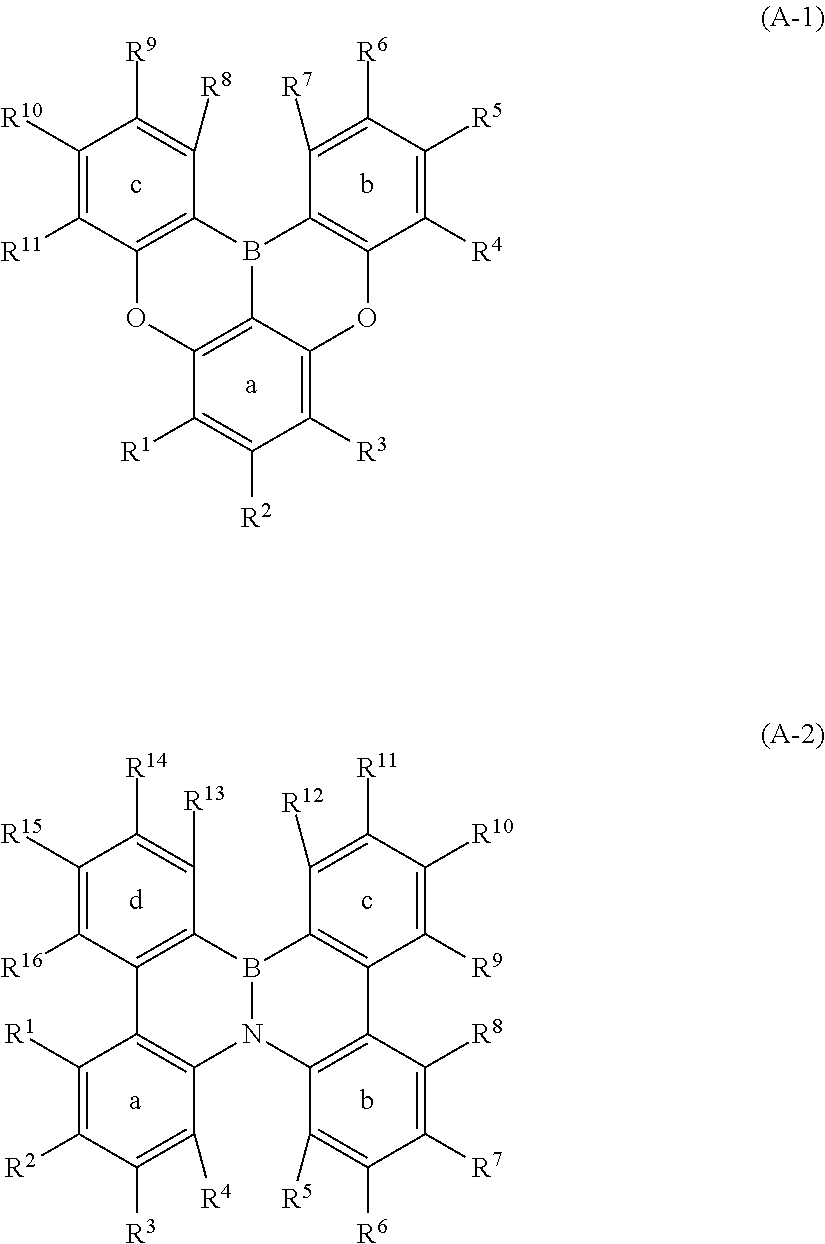Polycyclic aromatic compound and light emitting layer-forming composition
a technology of polycyclic aromatic compounds and compositions, applied in the field of polycyclic aromatic compounds and light-emitting layer-forming compositions, can solve the problems of high manufacturing cost, difficult continuous manufacturing, and high apparatus cost, and achieve good film formability, excellent solubility, and storage stability.
- Summary
- Abstract
- Description
- Claims
- Application Information
AI Technical Summary
Benefits of technology
Problems solved by technology
Method used
Image
Examples
synthesis example 1
(1-91)
[0605]
[0606]A flask containing 1,5-dibromo-2,4-difluorobenzene (30.0 g), phenol (31.2 g), potassium carbonate (45.7 g), and NMP (150 ml) was heated and stirred at 160° C. The reaction liquid was cooled to room temperature, and NMP was distilled off under reduced pressure. Subsequently, water and toluene were added thereto, and the mixture was partitioned. The solvent was distilled off under reduced pressure, and then the residue was purified using a silica gel short pass column (developing liquid: heptane / toluene=1 (volume ratio)). Thus, ((4,6-dibromo-1,3-phenylene)bis(oxy))dibenzene (44.0 g) was obtained.
[0607]
[0608]In a nitrogen atmosphere, Pd(PPh3)4 (5.5 g) was added to a suspension solution of ((4,6-dibromo-1,3-phenylene)bis(oxy))dibenzene (40.0 g), phenylboronic acid (34.8 g), sodium carbonate (60.6 g), toluene (500 ml), isopropanol (100 ml), and water (100 ml), and the mixture was stirred for eight hours at a reflux temperature. The reaction liquid was cooled to room tem...
synthesis example 2
(1-1-1)
[0612]
[0613]1-Bromo-3-iodobenzene (42.44 g, 150 mmol, 1.0 eq.), biphenyl-3-ylboronic acid (29.70 g, 1.0 eq.), sodium carbonate (31.80 g, 2.0 eq.), and tetrakis(triphenylphosphine) palladium(0) (3.47 g, 0.02 eq.) were weighed and put into a 1 L three-necked round bottom flask. Degassing under reduced pressure and nitrogen purge were sufficiently performed. Thereafter, toluene (360 mL), ethanol (90 mL), and water (90 mL) were added thereto in a nitrogen atmosphere, and the mixture was refluxed and stirred at 74° C. After three hours, heating was stopped, and the temperature of the reaction liquid was returned to room temperature. Extraction was performed with toluene three times, the organic solvent layers were then unified, anhydrous sodium sulfate was added thereto, and the mixture was allowed to stand for a while. Sodium sulfate was filtered off, and the solution was concentrated under reduced pressure. The resulting oil was caused to pass through a silica gel short column c...
synthesis example 3
(1-1-2)
[0627]
[0628]3-Bromophenol (8.0 g, 46.2 mmol, 1.0 eq.), P4Bpin (20.0 g, 1.0 eq.), sodium carbonate (14.7 g, 3.0 eq.), and tetrakis(triphenylphosphine) palladium(0) (1.6 g, 0.03 eq.) were weighed and put into a 500 mL three-necked round bottom flask. Degassing under reduced pressure and nitrogen purge were sufficiently performed. Thereafter, toluene (120 mL), ethanol (30 mL), and water (30 mL) were added thereto in a nitrogen atmosphere, and the mixture was refluxed and stirred. After completion of the reaction, heating was stopped, and the temperature of the reaction liquid was returned to room temperature. Extraction was performed with toluene three times, the organic solvent layers were then unified, anhydrous sodium sulfate was added thereto, and the mixture was allowed to stand for a while. Sodium sulfate was filtered off, and the solution was concentrated under reduced pressure. The mixture containing a desired product was caused to pass through a silica gel short column ...
PUM
| Property | Measurement | Unit |
|---|---|---|
| triplet energy | aaaaa | aaaaa |
| triplet energy | aaaaa | aaaaa |
| boiling point | aaaaa | aaaaa |
Abstract
Description
Claims
Application Information
 Login to View More
Login to View More - R&D
- Intellectual Property
- Life Sciences
- Materials
- Tech Scout
- Unparalleled Data Quality
- Higher Quality Content
- 60% Fewer Hallucinations
Browse by: Latest US Patents, China's latest patents, Technical Efficacy Thesaurus, Application Domain, Technology Topic, Popular Technical Reports.
© 2025 PatSnap. All rights reserved.Legal|Privacy policy|Modern Slavery Act Transparency Statement|Sitemap|About US| Contact US: help@patsnap.com



